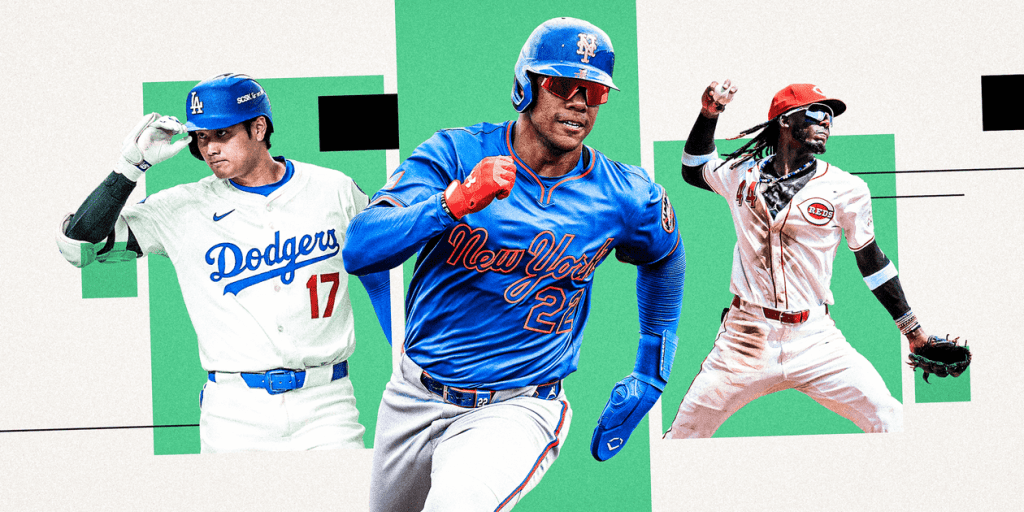Editor’s Note: This article is part of our Rankings & Tiers series, providing analysis on essential athletes, teams, and organizational structures in sports.
Welcome to The Athletic’s fourth annual MLB Position Player Tiers, in which we assess and rank the top 100 position players in baseball based on their anticipated contributions in hitting, fielding, and baserunning for the 2025 season. These players are categorized into the following six tiers:
• Best of the Best
• MVP Contenders
• All-Stars
• Steady and Solid
• 30-something Regulars
• 20-something Regulars
Inside each tier, players are alphabetically listed without specific rankings, allowing room for reader interpretation. For the fifth and sixth tiers, we further differentiate between 20-something regulars and 30-something regulars.
We consulted scouts, coaches, and front-office staff throughout MLB, gathering their anonymous insights on the ranked players and the rankings. Those interested in our individual rankings can find detailed information here.
Tier 1 — The Best of the Best
Selecting the top players was relatively straightforward. Aaron Judge recently won his second MVP, and Shohei Ohtani clinched his third MVP while entering the illustrious 50/50 club. While Mookie Betts hasn’t won an MVP since 2018, he has accumulated more bWAR (34.6) than all but Judge during that time, showcasing his versatile positioning that has significantly contributed to the Dodgers’ success. Betts’ career ring total now stands at three.
While these three players are over 30, two younger stars are emerging. Bobby Witt Jr., at 24, topped the majors in batting average (.332) last season and joined the 30/30 club for the second time. Another standout, 23-year-old Gunnar Henderson, hit 37 homers and achieved 9.1 bWAR while excelling defensively.
There are some concerns regarding the defensive capabilities of two of the top six players. One development executive questioned Ohtani’s addition, stating he should be considered the best position player only if he plays in the outfield. With Ohtani set to pitch again in 2025, that scenario seems unlikely.
Tier 2 — MVP Contenders
This tier represents a high level just below the top, featuring players who demand attention on the field. However, concerns regarding durability persist for some, like Corey Seager, who has missed significant games in three of the last four seasons. Conversely, Ronald Acuña Jr. was named the National League’s unanimous MVP in 2023, but injuries have hindered his performance in prior years, raising questions about how his health will influence his game in 2025.
Interestingly, there is debate regarding the placement of older players such as Bryce Harper and Freddie Freeman, reflecting an industry view that first basemen’s value is diminishing. Each player has experienced success, with Freeman and Harper both having MVP accolades in their careers.
Tier 3 — All-Stars
This tier combines established veterans, often MVP candidates, who face challenges due to age or injuries with promising young talents brimming with potential. Notably, Mike Trout has played only 41% of his games over the past four years, yet when fit, he continues to perform at an elite level. His move from center field to right aims to enhance his longevity in the game.
Younger players, including Corbin Carroll, are also worth mentioning. Despite a mixed performance in his second year, Carroll demonstrated strong skills during the latter half of the season. Others in Tier 3, like William Contreras and Adley Rutschman, also showcased their abilities, earning their places among the best in their positions.
Tier 4 — Steady and Solid
This tier heavily emphasizes consistent performance. Wyatt Langford made waves at the end of last season, indicating substantial potential. Meanwhile, players like Steven Kwan and Andrés Giménez spark contrasting opinions on their longevity in these rankings. While Kwan is noted for his all-around play and defensive skills, concerns linger about his aging speed and ceiling.
Tier 5 — 30-Something Regulars
This tier predominantly focuses on how well players can extend their careers. Byron Buxton poses a challenge to rank due to frequent injuries despite his strong per-game performance. Xander Bogaerts, conversely, faces scrutiny after positioning himself lower due to a rough season, while Salvador Perez defies age expectations, making a solid case for his inclusion based on recent achievements.
Tier 6 — 20-Something Regulars
CJ Abrams illustrates the challenges of ranking emerging talent, particularly considering defensive contributions. Royce Lewis and his potential upside are paired with concerns about his durability and consistency, showcasing the dynamic nature of player potential and performance within this ranking framework.
Best of the Rest
Recognizing players who fell short of the top 100, we see many young athletes poised to disrupt future rankings. Observations about players like Alec Bohm and Jackson Holliday highlight the ongoing emergence of talent in baseball, emphasizing the excitement of potential future upswing in rankings.
The Rankings and Tiers series is sponsored by E*Trade from Morgan Stanley. The Athletic maintains full editorial independence. Sponsors have no control or influence over the reporting, editing process, and do not review stories prior to publication.
(Illustration: Dan Goldfarb / The Athletic; Photos: Masterpress, Rich Storry, Andy Lyons / Getty Images)



